Each year, Aarhus University Research Foundation awards 5 PhD prizes to particularly talented PhD students.
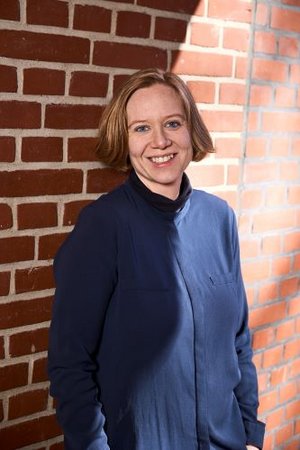
Alternative News Media
In her PhD project, Miriam Kroman Brems demonstrates that, in Denmark, there is reason to temper concerns over negative democratic implications of the use of alternative news media.
”Brexit and the first election of Donald Trump as US President spawned great interest in alternative news sites critical of mainstream news media and characterised by ideological partisanship. In Denmark, this includes e.g. Den Korte Avis and Solidaritet, and I wanted to understand why parts of the population are attracted to this type of news content and its impact on democracy,” says Doctor of Media Science and Journalism Miriam Kroman Brems.
The emergence of alternative news sites i.a. caused concern that users of the sites would lose faith in mainstream news media and end up in so-called echo chambers.
“My project demonstrates that even though Danish users of alternative news media have less faith in mainstream news media compared to the rest of the population, they still have considerable faith in media in general. At the same time, they actively use mainstream media,” Miriam says.
This is due to our high level of confidence in the media and politicians in general compared to other countries, she argues.
“This suggests that the democratic implications of the use of alternative news media depend on the specific political and media context. Therefore, it is important to emphasise that while there is reason to temper concerns in Denmark, this may not be the case in other countries, where the population has less faith in the media and politicians,” Miriam explains.
Her PhD project is based on a combination of qualitative interviews and a large quantitative questionnaire survey. She continues her work as a postdoc focussing on social media.
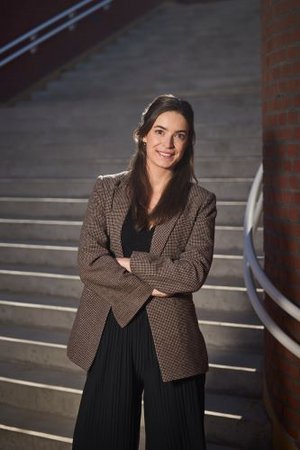
Political Psychology
Lea Pradella has studied the potentials and limitations to the use of cognitive empathy in political debates.
After completing her bachelor’s degree in political science and psychology at the University of Mannheim, Lea Pradella moved from Germany to Aarhus to study political psychology. As a master’s degree student – and now as a postdoc – she was affiliated with the project Research on Online Political Hostility.
Lea Pradella’s PhD project focusses on emotional empathy across political divides.
”I was able to prove that if we try to understand why the other person feels the way they do, we can reduce hostility and increase agreement. I also found that we feel more comfortable discussing politics if the other person expresses empathy,” Lea says.
Empathy can thus be a powerful tool, but it has its limitations, especially in the face of fundamental political disagreement.
“My research suggests that empathy is most powerful when used exclusively – e.g., when we simply say, ‘I understand’ – and that it loses momentum when accompanied by disagreement – e.g., when we say, ‘I understand, but I disagree’. And therein lies the paradox. We want to use empathy to navigate disagreements in a constructive manner, but as soon as fundamental disagreements are revealed, sentences such as ‘I understand’ lose their positive effect,” Lea explains.
Her research results are based on extensive questionnaire surveys and tests conducted in Aarhus and as a visiting researcher at the University of California, Berkeley. For these tests, she developed i.a. innovative instruction videos designed to make the participants exercise empathy towards their political opponents in social media.
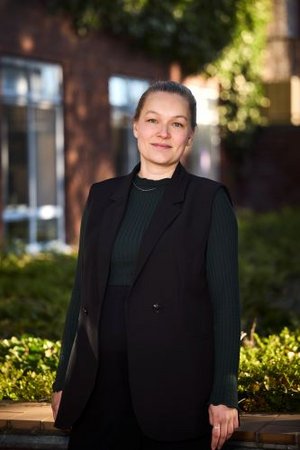
Bladder Cancer
Through detailed analysis of large amounts of data, Sia Viborg Lindskrog has given bladder cancer patients hope of better, early-stage treatment.
Doctor of Molecular Medicine Sia Viborg Lindskrog has specialised in bioinformatics, which involves analysing data on the computer and leaving the lab work to colleagues. She is part of a group researching bladder cancer as part of a large European collaboration. This has given Sia and her colleagues access to data from a very large group of patients.
”It enabled us to identify new connections, analysing tumour material at molecular level. In the first part of the project, I studied data from patients with early-stage bladder cancer. I looked at the genes expressed by the cancer cells and identified four sub-types, one of which is associated with a more aggressive course of disease than the others,” Sia explains.
The results of the project can potentially lead to more customised treatment compared to today, where early-stage bladder cancer patients receive more or less the same treatment. Moreover, Sia and her group proceeded to studying gene expressions at single-cell level. This revealed that several sub-types can co-exist within a tumour – which of course is valuable knowledge.
”In the next part of the project we looked at later stages of the disease, where patients had had their bladder removed. Our results suggest that – compared to scanning – a more effective way to detect recurrence is to look for cancer DNA in the blood,” Sia says.
She continues her work as a postdoc in a very promising clinical study, testing the results on patients and hoping that this will enable treatment at an earlier stage in the future.

Synthetic Biology
Ane Bretschneider Søgaard and her group have made scientific progress using artificial surface receptors, which hold both biotechnological and biomedical potential.
A sub-discipline of synthetic biology is the use of artificial building blocks to imitate nature and thus modify cell functions. Doctor of Nanoscience Ane Bretschneider Søgaard has helped advance the field of cell modification. Researchers working on cell modification can take a genetic or chemical approach, and even though Ane holds a master’s degree in molecular biology and genetics, she took the chemical approach as a PhD scholar working in Professor Alex Zelikin’s lab of medicinal chemistry.
”I worked as a trouble-shooter, drawing on my biological perspective.
Among other things, I established a protocol for the production of synthetic cells, and we then designed chemical receptor molecules and inserted them into the synthetic cells, where they are able to ‘sense’ the presence of natural enzymes outside the cell and activate a response inside the cell,” Ane explains.
This shows that it is possible, using organic synthesis, to produce simple molecules that can serve as surface receptors and enable synthetic cells to respond to external stimulus, which may potentially be used as a cell-free biosensor in the future.
”A different chemical surface receptor design can be used on human cells. It enables the uptake of specific proteins, which facilitates the delivery of drugs to the modified cells. In the future, it could potentially remove disease-related proteins,” Ane says.
To demonstrate both applications, Ane conducted the two very different projects as part of her PhD.
She continues her work as a postdoc in the Zelikin Lab.
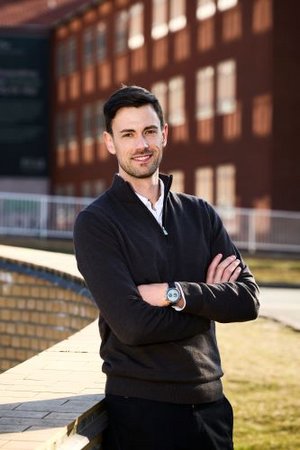
Ruminant Nutrition
In his PhD project, Morten Maigaard has studied feeding strategies aimed at reducing methane emissions from cattle.
”I have trained in agriculture and originally planned for a career in farming. But then I developed an interest in animal science, enrolled at the University of Copenhagen and developed a taste for science. As a researcher, I draw on my background in farming as well as my scientific perspective,” says Morten Maigaard.
In his PhD project, Morten conducted the first ever large-scale Danish tests of feeding additives aimed at reducing methane emissions from cattle. The results of the project have led to the political decision to make Bovaer – or high-fat – feed mandatory for conventional dairy farmers with more than 50 cows beginning in January 2025.
”We looked at what could be done to reduce methane emissions here and now. Bovaer reduces emissions by 30 per cent; the other options were nitrate and high-fat feed. We believed a combination of the three would create the highest reduction, and therefore we conducted large-scale tests of all possible combinations. However, none of the combinations were able to beat Bovaer,” Morten explains.
The next step was to identify the optimum dosage of Bovaer which could significantly reduce methane emissions without affecting the milk quality.
Towards the end of the project Morten studied the potential benefits of the fact that cows with reduced methane emissions instead produce more hydrogen.
Morten continues his work as a postdoc focussing i.a. on the long-term effects of feed additives in calves.
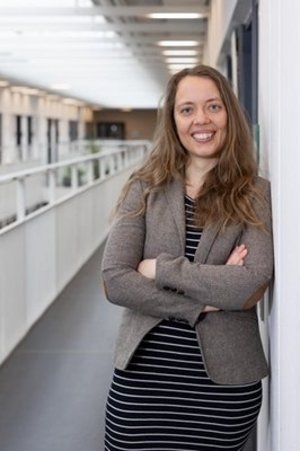
Cognitive science
How do we use our inner voice to improve performance and concentration? And is it really true that some people do not have an inner voice? As a PhD student, Johanne Nedergaard set out to answer these questions.
Not all researchers can claim to have established a new field of research. But Johanne Nedergaard did as a PhD student of cognitive science – a field that draws on i.a. psychology, linguistics and philosophy. During a research stay in Wisconsin, Johanne Nedergaard and one of her American colleagues were the first to study the field of anendophasia, which is the study of the inner voice.
“We considered it an extension of aphantasia, which is the inability to create mental imagery. We were inspired by this field to try to identify ways of determining whether people do in fact have an inner eye or voice, but just do not notice it,” Johanne Nedergaard says and adds:
“We often associate the inner voice with verbal memory, so we tested that form of memory by giving the test subjects a list of words to remember in the right order. It turned out that people with anendophasia did not do as well as the other test subjects. We also showed them images of various objects and asked them whether or not they rhymed, and here too those with anendophasia did not perform as well as the others.”
In her PhD project, Johanne Nedergaard also studied other aspects of the nature and function of the inner voice. Among other things, she studied the inner voice and its role in physical endurance from a cognitive psychological perspective and learned that if you prevent people from talking to themselves it will affect their performance negatively. And she had more experiments planned, but then the pandemic struck in March 2020.
“Instead I had to learn how to create online experiments. And this paid off, as it enabled me to conduct anendophasia experiments online. And because anendophasia is pretty rare – affecting only around 5-10 % of the population – it is one of those things that would be difficult to study without using the internet and social media for recruitment of test subjects,” Johanne Nedergaard says.
As a postdoc at the University of Copenhagen, she now researches aphasia – language impairment following e.g. a blood clot in the brain or brain haemorrhage – in Greenland.

Behavioural economics
As a student of behavioural economics, Christian T. Elbæk developed an interest in the borderline territory between economics and psychology. The literature was full of studies on the negative behavioural and cognitive effects of resource scarcity, but scientists have only recently begun to focus on the effect on the moral habitus.
“And here the literature was inconclusive. Therefore, the first thing I did as a PhD student was to conduct a meta-analysis to understand why. It showed that the effect of resource scarcity on morality is not universal, as previously assumed, but depends i.a. on the time frame. In a situation of acute resource scarcity, we are prone to cheat for personal gain, but this is not the case if we find ourselves in a chronic situation of resource scarcity, the literature shows,” Christian T. Elbæk explains.
Subsequently, he conducted three empirical studies to test the results of his meta-analysis. Surprisingly, though, the results pointed in a different direction.
“My research methods were more advanced and robust than those of previous studies, and the results showed that acute resource scarcity does not increase our inclination to cheat,” he says.
Interestingly, his third and most comprehensive study with more than 50,000 respondents from 67 countries suggested that people who find themselves in a situation of chronic resource scarcity appear to attach greater importance to moral principles.
“Using advanced statistical methods, we were able to demonstrate that respondents who consider themselves affected by resource scarcity attach greater importance to moral decision making than people with more resources. This is consistent with previous behavioural research, which suggests that people with few resources are forced to be more attentive to their environment and fellow human beings because they depend on help from others. So our results can help break down destructive stereotypical ideas of people with few resources as unethical,” Christian T. Elbæk concludes.
Christian T. Elbæk continues his research as assistant professor at Aarhus BBS.
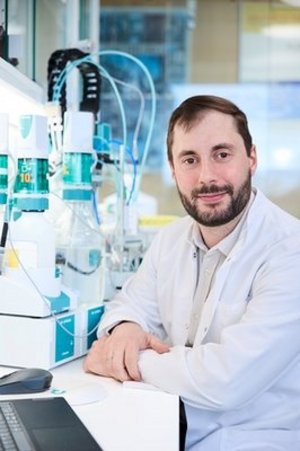
Renal physiology
Dr Peder Matzen Berg has studied base secretion by the kidneys, and his research has led to the development of promising new test methods.
As a student of medicine at Aarhus University, Peder Matzen Berg developed an interest in the kidneys, which i.a. control the acid-base balance in the body. Contributing to research at the Department of Biomedicine he got an idea which he later used in a PhD project to develop potentially ground-breaking test methods. First, he tested the idea on mice which had been genetically modified to reflect the condition cystic fibrosis.
“We knew that patients with cystic fibrosis experience excess amounts of base in the body, but we did not know why. So we wanted to study how mutations in patients affected a renal cell function that seemed to play a vital role in the kidneys’ ability to secrete base,” Peder Matzen Berg explains.
His idea was to administer base to mice models in the form of a baking powder solution and via urine samples measure their ability to secrete base. This method turned out to be effective and transferrable to humans, and these results led to a project headed by Peder Matzen Berg and a group of chief physicians from the hospital in Skejby, testing 50 patients with cystic fibrosis.
“We found a clear connection between the kidneys’ ability to secrete base and the severity of the patient’s lung and pancreatic function impairment. In other words, the urine test can reveal the severity of the disease and how well the patient will respond to treatment,” Peder Matzen Berg explains.
Aarhus University has now patented the test, which along with test equipment was developed with support from Innovation Fund Denmark. Peter Matzen Berg now hopes the test will be implemented in hospitals and help doctors find the right medicine and dosage.
“We have also developed a test for patients suffering from kidney failure. By testing patients at an early stage of the disease, we can get a sense of whether or not they are at high risk of needing dialysis or a new kidney, and thus being able to identify patients who will need extensive treatment is useful,” says Peder Matzen Berg, who as a postdoc continues to focus on the kidneys.
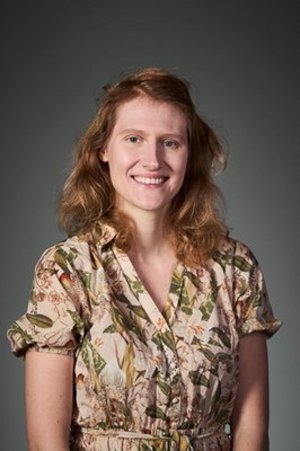
Quantum materials
Using nanotechnology, scientists can create materials that are only a few atoms thick. These so-called two-dimensional materials are extremely susceptible to change, a quality that can be used to make technological components faster, smaller and more flexible. As a PhD student, Paulina Ewa Majchrzak specialised in identifying such functions at a microscopic level.
An internship at the Artemis Lab in the UK during her undergraduate studies aroused her interest in the subject. This was where she got to know the research team from Aarhus University.
“We have studied the behaviour of electrons in solids when affected by an intense laser pulse. The time it takes the electrons to discharge can tell us something about the many complex quantum mechanical processes that occur. Sometimes, though, you can also change the properties of the materials,” Paulina Ewa Majchrzak says.
The two-dimensional metal vanadium diselenide (VSe2) is a good example. When cooled, its crystal structure changes and the material becomes electrically isolating.
“We learned that striking cold VSe2 with an intense laser pulse will make it conductive again in a split second. It is like changing from 0 to 1. However, it is harder to reset the material and return to the isolating state, and this is important to consider if you thinking of using VSe2 as a component in e.g. a memory unit,” Paulina Ewa Majchrzak explains.
Aside from working with lasers in labs throughout Europe, she has also contributed to the design of a new test model in the basement below the Department of Physics and Astronomy at Aarhus University. This enabled the researchers to characterise the electronic properties of twisted double-layer graphene, a new wonder material in the computer industry.
Paulina Ewa Majchrzak who is originally from Poland continues to apply spectroscopic methods to quantum materials as well as rechargeable batteries in a prestigious postdoc position at Stanford University, California.
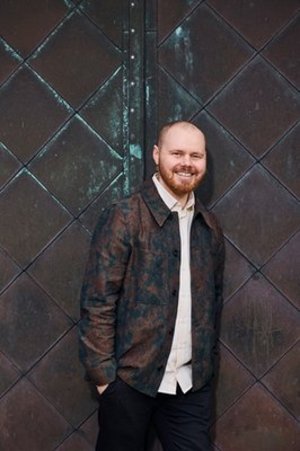
Emissions inventory
Thomas Daae Stridsland has used interdisciplinarity to show universities how they can help reduce greenhouse gas emissions.
When Thomas Daae Stridsland came to Aarhus University as a PhD scholar, his mission was clear. The University was in the process of developing methods for calculating and managing its carbon footprint and turning knowledge into action. But the research was lacking.
“Emissions inventories is a largely unstudied subject. It therefore made sense that I should produce a series of case studies on a number of subjects, which would eventually be used as empirical data in my thesis. It seemed that no matter where I looked, the science was lacking,” Thomas Daae Stridsland says.
He is compelled by a desire to do research that makes a tangible difference outside the university. As a master’s degree student at the University of Copenhagen, he had taken a course on climate solutions, which matched university students with companies looking for help with their emissions inventory and green transition. Thomas Daae Stridsland took a similar approach in his PhD project and refined it in the case studies.
“The master’s degree in climate change is interdisciplinary. And my PhD project proved that natural science is not enough. Together with a student of philosophy, I wrote an article arguing that our ability to successfully manage the climate crisis depends on individuals’ and groups’ ability to change. We need cross-disciplinary solutions, which is evident from my research,” he says.
A main element in that context is transitional risks. Thomas Daae Stridsland’s study shows that a university looking to reduce its risks should 1) cooperate closely with society and – as the view of sustainability begins to change – 2) show that it makes an active effort to combat climate change. As first author of Aarhus University’s cross-disciplinary emissions inventory and a best practice guide to universities produced together with Universities Denmark, Thomas Daae Stridsland has indeed helped make Denmark a pioneer country in the area.
Thomas Daae Stridsland is now a postdoc of Climate and Food Security at the University of Copenhagen.

Didactics of Mathematics
What happens to students’ mathematical communication skills when you use digital tools in your teaching? It is an important question to ask, not least considering the advent of digital tools and recent shift in focus in the didactics of mathematics from mastering to possessing skills.
Cecilie Carlsen Bach holds a PhD from the Danish School of Education, and she has studied this development focussing on the popular dynamic geometry application GeoGebra. In the six articles of her thesis, she explores the problems and potentials of using this type of application. In her research, she draws on the Networking of Theories and design studies:
“My project draws connections between theoretical perspectives on the use of digital technology and theoretical perspectives on mathematics communication. I used design studies and observed eight- and ninth-form students as they used GeoGebra and communicated in pairs,” she says.
Her overall conclusion is that the way students use their mathematical communication skills in situations involving GeoGebra largely depends on the circumstances.
“A main challenge is the fact that students focus on the digital tool and thus fail to use their communication skills. However, if used correctly, the tool can help students not only use their communication skills, but also to strengthen them,” says Cecilie Carlsen Bach.
Today, she is a postdoctoral scholar with the Danish School of Education, where she continues her research.
Hear more and meet Cecilie in the podcast series "De unge forskere"
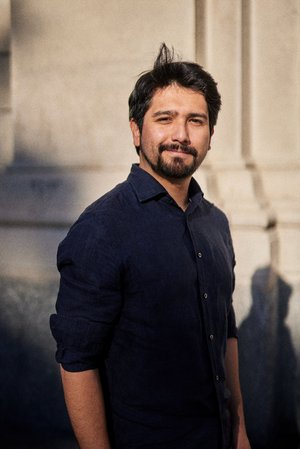
Operation and data analysis
Various factors influence modern-day waste management and recycling. And decisions are made at various levels – strategic, tactical and operational – which makes optimisation difficult.
At the Department of Economics, PhD Maximiliano Cubillos has demonstrated that a combination of two research disciplines – operations analysis and data analysis – can make a difference. The first focusses on solving management issues by drawing on mathematical and statistical methods.
“When it comes to optimising waste management, operations analysis can help us identify models for i.a. successfully reducing costs and improving services. In one of my studies, I provide an algorithm that can help us choose the right location for waste containers and plan collection routes,” Maximi¬liano Cubillos says.
He also draws on advanced data analysis tools for analysing data on the weekly weighing of household waste in Herning Municipality over a period of eight years.
“Here I use a new method that enables me to predict the amount of waste produced at household level. It turns out that combining the method with a machine learning algorithm will significantly improve projections.”
Maximiliano Cubillos’ thesis consists of seven articles, five of which have been published. The young Chilean researcher continues his research in logistics optimisation as a postdoctoral fellow with the Politecnico di Milano, Italy.
Hear more and meet Maximiliano in the podcast series "De unge forskere"
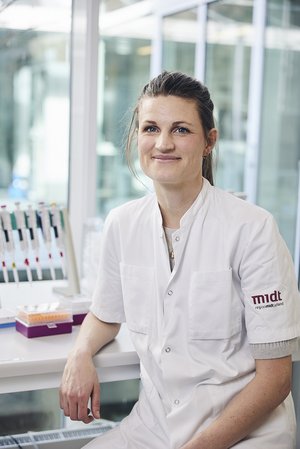
Genetics And Epidemiology
One of the most common chromosomal disorders is Turner Syndrome, where one of the X chromosomes is missing or partially missing. According to Doctor, PhD Mette Viuff, studying the underlying genetic mechanisms may improve our ability to prevent diseases associated with Turner Syndrome.
“Very little research has looked into how a missing X chromosome actually affects the body and leads to illness. We wanted to change that. We studied fatty tissue, muscle tissue and blood from women with Turner Syndrome, and we were surprised to learn that the cause of disease is not simply the missing genes on the X chromosome,” she says.
The missing X chromosome also appears to affect the remaining chromosomes and the way the genes are read. This is a ground-breaking discovery, which attracted international attention.
“The general view used to be that the condition is the result of the missing gene. We have shown that it is not that simple. Various mechanisms come into play here,” Mette Viuff concludes.
As part of her PhD project, Mette Viuff conducted epidemiological studies, which also led to important findings. Patients with Turner Syndrome are typically treated with oestrogen for the rest of their lives, even though this is known to increase the risk of breast cancer and blood clots. Mette Viuff has shown that in Turner patients, the hormone only has a beneficial effect.
Today, she works as an obstetrician in Aarhus and contributes to a new research project on Turner Syndrome in her spare time.
Hear more and meet Mette in the podcast series "De unge forskere"

Molecular Biology
According to Louise Marie Dalskov Kjerulff, who holds a PhD in molecular biology, the immune system is the most complex system in the human body. Scientists are still unable to account for all of its mechanisms. But Louise Marie Dalskov Kjerulff’s basic research has increased our understanding of how the body recognises infections and how this leads to a targeted immune system response.
“I studied specific mechanistic aspects of some of the proteins in the immune system. How do they pass on the signal resulting in the production of interferon molecules? Because without them, there is no way to warn the surrounding cells of the infection and ultimately start the production of antibodies,” explains Louise Marie Dalskov Kjerulff.
Having provided significant new knowledge about these pathways, she managed to establish an innovative clinical trial protocol together with Aarhus University Hospital.
“It describes ways to purify primary immune cells directly from the patient and subsequently treat them to make sure they survive and may be used for research purposes,” she says.
Her research team used the protocol to describe corona virus’ interaction with the immune system of the lungs. However, to molecular biologists, the protocol is widely applicable, as it may help answer a range of questions.
After completing her PhD project, Louise Marie Dalskov Kjerulff briefly held a position as a postdoctoral fellow before exchanging research for communication as a member of staff at the AU Public Natural Science Lectures.
Hear more and meet Louise in the podcast series "De unge forskere"
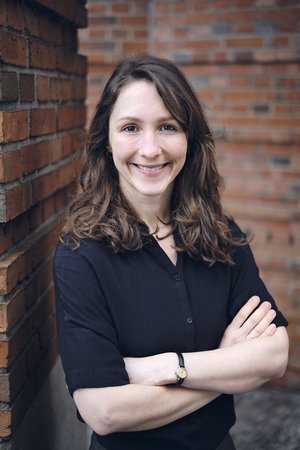
Arctic Microbiology
Especially in West Greenland, the colour of the ice sheet has begun to change; the new, darker colour means that the ice is melting faster than usual. The same phenomenon is seen at glaciers in other parts of the world, and it is the result of i.a. microalgae, which have adapted to the glacial environment. As a PhD scholar with the Department of Environmental Science, Aarhus University, in Roskilde, arctic microbiologist Laura Halbach studied the glacial algae of which little was known at the time.
“We did not know to which extent their growth was limited by the extremely nutrient-poor environment on the ice. And no one had studied their ability to absorb nutrients or the role of their pigments in light absorption,” she explains.
Today, Laura Halbach has filled this gap. As a PhD student, she conducted field studies and i.a. examined algae samples using a secondary ion mass spectrometer – a sophisticated technique which enables the study of algae at single-cell level. Previously, no one had used the technique in this field, but it enabled Laura Halbach to perform measurements revealing that glacial algae require very few nutrients.
“These are significant findings. These algae’s ability to effectively absorb and store nutrients suggests that they – aided by global warming – will be able to colonise more ice in the future and thus potentially accelerate the melting of the ice sheet,” says Laura Halbach.
Today, she continues her work as a postdoctoral researcher. She is currently rewriting articles from her thesis and adding more findings before publication.
Hear more and meet Laura in the podcast series "De unge forskere"
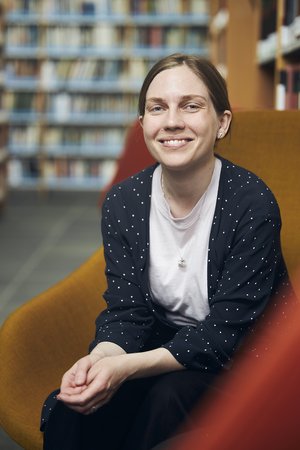
Social Anthropology
In Charlotte Ettrup Christiansen’s work, she uses the concept of ‘the poetic self’ to explore the sense of freedom and solace reading fiction in groups gives young people with mental health challenges.
Using art to heal is an international trend that’s on the rise. In Denmark, the national reading association has an empowerment programme that offers young people with mental health issues a chance to participate in guided reading groups. Anthropologist Charlotte Ettrup Christiansen’s PhD project was based on fieldwork in this setting.
“Traditionally, archaeologists have often used literary stylistic devices in their descriptions. Despite this, there’s a lack of anthropological studies of how people actually use literature. So that was something I thought it might be exciting to explore empirically,” she said.
The guided reading group concept was developed by the Danish reading association’s English sister organisation, The Reader. Participants meet in groups of about eight with a guide and read texts out loud, first prose and then a poem. The group takes breaks to discuss the texts during the session. For 19 months, Charlotte Ettrup Christiansen studied reading groups as a participant-observer, as well as conducting interviews.
Untraditional methods
“Research-wise, it was a brilliant way of getting detailed insight into what goes on in people’s heads when they read a text. And because my angle on this is anthropological, I wanted to situate the reading experience and the meaning of these reading groups in the larger context of the participants’ lives, so we also went to cafés and other places together outside the reading group,” she explained.
Her fieldwork also led her to explore the category of ‘psychological vulnerability’ itself, for example how young people experience being labelled as ‘psychologically vulnerable’. To do so, Charlotte Ettrup Christiansen drew on more experimental methods: “We did workshops where I worked with creative writing with some of these young people. Compared with a traditional interview, this was a more open way of exploring the questions: what can literature do, and how do young Danes experience psychological vulnerability.”
The poetic self
To understanding the dynamics of the reading groups, Charlotte Ettrup Christiansen developed the concept of ‘the poetic self’ , which can be understood as a counterweight to the classical anthropological concept of the ‘the narrative self’. A human life can be conceptualised in terms of a literary narrative, a sequence of events linked by cause and effect; but it can also be understood as a series of self-contained moments, like poetry.
“The idea behind ‘literature by prescription’ will often be that after reading literature, you can reshuffle the elements of your own narrative about yourself, seen in a new light. What I’m pointing out is that something else can also happen. What the participants in the reading groups emphasised more was that they could find release from their usual narratives about themselves when they met and read together. They could just be in this rather ritualised reading event, surrender to the experience of the text without having to deal with themselves as much. In that sense, it became an escape for them,” she said.
Charlotte Ettrup Christiansen is currently conducting anthropological research at the Silkeborg Regional Hospital, and in 2023, she’ll start on a postdoctoral project aimed at developing a new theoretical framework for describing the creative processes of literary authors.
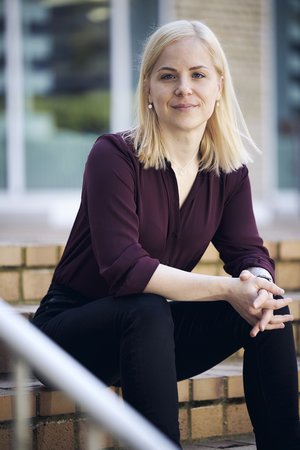
Emotion Research
In her PhD project, Mia Bjørnskov Mikkelsen draws on recent theories of emotion and experiments with test subjects to advance our understanding of how our emotional lives develop and change as we age.
The older we become, the happier we are. In a nutshell, this is the fascinating phenomenon that psychologist Mai Bjørnskov Mikkelsen explored in her PhD project.
“Previous research has shown that the ratio of positive to negative feelings typically shifts in a positive direction as people age. At the same time, it’s also a fact that our bodies age and become less reactive, both physiologically and hormonally. So I wanted to investigate the extent to which and how physiological changes correlate with changes in our emotional lives,” she explained.
Contemporary research on emotion often focuses on the physiological as precursors to physiological experience; formerly, physiological responses were understood exclusively as responses to feelings. However, this new approach to the physiology of emotion had not yet been applied to research into emotional aging. Mai Bjørnskov Mikkelsen’s work brings these advances into the field with a theoretical study, a meta-analysis and an experiment.
New theoretical framework
“My theoretical analysis is about how modern theories of emotion can be used to frame emotional aging in a way that opens up the possibility of studying the body as a potential source of changes in our emotional lives in adulthood. This paves the way for new research questions that can potentially contribute to a better understanding of the role of the body in emotional aging,” Mai Bjørnskov Mikkelsen said.
To uncover age-related differences in physiological and self-reported emotional responses, she performed a meta-analysis of 74 experimental studies that explored how test subjects in different age groups react to emotional stimuli. Her meta-analysis of these studies showed that younger subjects exhibited stronger physiological reactions – for example heart rate and sweat rate responses. But when asked about their feelings, older subjects actually reported stronger feelings than younger subjects.
“In our own experimental study, we measured the response of younger and older test subject to images that provoked feelings of disgust and sadness, while we also studied their interoceptive sensitivity, or their ability to register signals from their own bodies. And what we found was that there was a correlation between interoceptive sensitivity and the strength of their emotional response to the images among younger subjects, while this correlation was not evident among older subjects,” Mai Bjørnskov Mikkelsen explained.
Clinical implications
“Maybe we form our emotional experiences on the background of different information than physical responses as we get older. This may mean that if I’m a psychologist who’s going to talk about feelings with a younger client, it’s an advantage to ask about what physical responses she feels, but with an older client, I may need to find a different way to access their emotional experience,” Mai Bjørnskov Mikkelsen said.
She stressed that such conclusions were speculative, as this research area is still in its infancy. This is one reason she’s interested in continuing her work in this field. In her current postdoc project at AU, she is primarily focussing on the effects of body position on emotional experience.
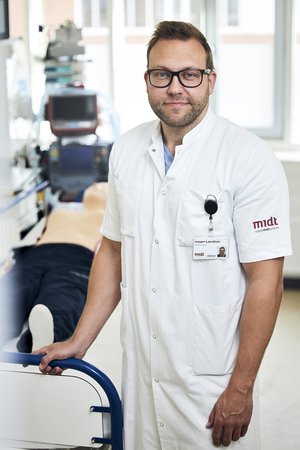
In-Hospital Cardiac Arrest
Medical doctor Kasper Glerup Lauridsen’s work has shown how minimising interruptions during CPR can significantly improve the treatment of cardiac arrest in hospital patients.
The team leaders’ countdown is calm and steady, despite the acute situation: a young patient is receiving CPR:
“Rhythm check in fifteen seconds. We also need to check the pulse. All clear! Five-four-three-two-one. Stop heart massage.”
Each member of the CPR team knows their individual - and important - function, and they know the cues: “No pulse,” the nurse says a few seconds later, while the doctor checks the monitor to confirm the absence of a shockable rhythm, so it’s too early to start using the defibrillator. So the next command is “start CPR”.
According, to Kasper Glerup Lauridsen, who just finished his PhD in medicine, this scene represents a best-case scenario. But in his dissertation, he show how different reality can play in in a hospital setting. In practice, the absence of effective routines and a shared language often leads to an unnecessarily long interruption in CPR, which reduces patients’ chances of survival.
A gap in the research
Early in his medical training, Kasper Glerup Lauridsen noticed that while treatment of cardiac arrest outside the hospital general follows optimised standards,the response to in-hospital cardiac arrest is much less organised. This imbalance is reflected in a lack of focus on in-hospital cardiac arrest in the research literature. So Kasper decided to make a contribution to addressing this in his BSc project. “We saw huge differences in how the hospitals’ cardiac arrest teams were organised. In some places three people were called in, in others ten. And often it’s some of the most junior doctors who are involved. This is in contrast to the highly standardised approach to cardiac arrest outside the hospitals. So this is what I ended up working on in my PhD project, and it’s actually included in my dissertation,” he explained.
In his PhD project, Kasper Glerup Lauridsen investigated how in-hospital cardiac arrest teams might work together more effectively, for example by introducing standardised communication, as in the example above. His research is based on 3,700 survey responses from cardiac arrest team members, which made it possible to analyse the factors that contribute to successful cardiac arrest treatment, for example in relation to teamwork, communication and leadership.
International consensus
“With input from the aviation industry, NASA and elite sport, supplemented by some qualitative analyses, we’ve attempted to come up with the optimal model for standardised communication, in order to minimise interruptions when CPR is administered. It was designed as an international consensus study, and it’s already had some influence on the European guidelines in this area,” Kasper Glerup Lauridsen said.
In his current position as a resident physician, he still has some time for research. He is working on a more comprehensive study to test the promising model for standardised communication than he was able to develop in his PhD project.
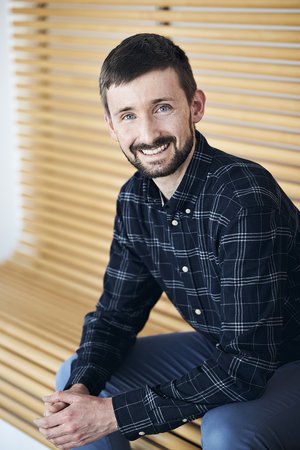
Development Of Quantum Chemistry Methods
Niels Kristian Kjærgård Madsen has developed improved equations for the calculation of the quantum dynamics of molecules which will make it possible to study chemical reactions by simulating them more precisely.
For Niels Christian, a recent PhD graduate in theoretical chemistry, the answers to all of his questions lie hidden in quantum physicist Erwin Schrödinger’s famous 1925 equation. And although quantum physics is highly specialised, the questions he studies are of very general interest:
“Technological development depends on our understanding how molecules behave and interact with each other. For example, in the pharmaceutical industry and in the development of green energy solutions. But we can’t see molecules under a microscope. Instead, we can use the Schrödinger equation to simulate what goes on in molecules,” explained Niels Kristian Madsen.
Although the equation has been in use for almost a century, it hasn’t yet been possible to exploit its full potential in relation to simulating the quantum dynamics of the atomic nucleus. Quantum mechanics has made greater advances in understanding electrons. But in order to understand what takes place in a chemical reaction, it’s also necessary to understand the dynamics of the atomic nucleus.
Niels Kristian Kjærgård Madsen’s PhD project just might have cracked the code.
The curse has been broken
He has shown how new methods of calculating quantum dynamics can “break the curse of dimensionality,” as he puts it in the title of his dissertation. The ‘curse’ is a wall quantum chemists hit when performing calculations of this kind that sets limits on what is practically possible.
“With Schrödinger’s equation, we can carry out quite accurate calculations on a molecule with four atoms. But the problem is that with each additional atom, the complexity of the calculations grows exponentially if you use the conventional method. In this specific case, you hit the wall as soon as you try doing the calculations on a five-atom molecule,” explained Niels Kristian Kjærgård Madsen.
While the alternative models that have been proposed until now can be used to approximate calculations on larger molecules, but without the desired accuracy.
“We succeeded in developing methods with a high degree of accuracy that can be used on larger, more relevant chemical research problems. The way they work is that instead of scaling exponentially, so that the calculations become 1,000 times more complex with the addition of just one atom, they scale polynominally, so that you get calculations that are maybe 10 times as complex with a molecule of twice the size.”
For non-experts too
Niels Kristian Kjærgård Madsen explained that while the research group’s groundbreaking results were the result of a collaboration, he doesn’t hesitate to claim responsibility for refining the theory and developing the right variations of the Schrödinger equation.
“Since then, the group has continued working together to develop a program that can solve the equations more quickly. This is also important work, because this research with have broader applicability if we can actually offer software that can be used by both experts and non-experts,” Niels Christian said.
He knows how quantum chemistry research is used by companies in the business; since completing his PhD, he has worked with software development in two of them.
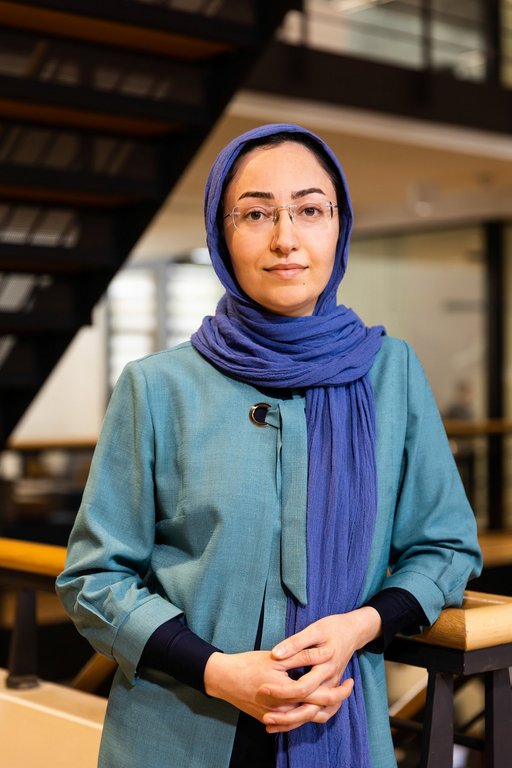
Computer Technology
Niloofar Yazdani’s work has shown how networks with smart devices can be future-proofed. In particular, her data compression technique can accelerate development in this area.
For our smart homes, companies and public spaces with their increasing array of wirelessly connected devices in the so-called ‘Internet of Things’ (IoT) to function, it’s decisive that our digital infrastructure keep up with the times. But the amount of data in these networks continues to increase, and the IoT devices themselves may have limited capacity and bandwidth, not to mentiojn a relatively unreliable data stream.
Software engineer Niloofar Yazdani’s PhD project is a step in the direction of a faster and more sustainable direction.
“My project focuses on effective IoT data transfer in three main areas: data compression, recovery of damaged data and network coding. In each of these areas, I have contributed new ideas,” she said.
There is high degree of direct practical applicability in Niloofar Yazdani’s work, which is the result of collaboration with companies, including Kamstrup; using a special form of data compression, she helped the company dramatically reduce the amount of data transmitted from their sensors.
A greener alternative
“If you have a number of identical temperature sensors in a building that are sending data to the server, it’s obvious that the data being generated is highly uniform. In these cases, multisource data compression can reduce the total data transmission on the network significantly by exploiting the uniformity of the data, without any form of coordination between the sensors,” Niloofar Yazdani explained. With her new data compression technique, she demonstrates how data transmission can be reduced without the need for individual sensor units to ‘know’ about data from each other. To achieve something similar with previously existing techniques would require extremely complex mechanisms; Yazdani’s solution is practically speaking endlessly scalable.
“Our proposal is interesting for a lot of applications. The technique is loss-free, in other words, it doesn’t affect the quality of the data. At the same time, it reduces the amount of energy needed to transfer the relevant data – and energy consumption is top of mind these days.”
Faster and more efficient
One extremely important factor is that Niloofar Yazdani’s data compression technique also minimises data delay.
“With conventional techniques, there’s time considerations involved, because the sending device must gather sufficient data before it can deliver the compression, which takes time. But we’ve shown that our proposed data compression technique removes these considerations, which means we can improve the compression rate and minimise delay at the same time,” she explained.
Niloofar Yazdani has also broken new ground with her techniques for restoring damaged data and a proposal for a new kind of network coding she calls ‘revolving codes’.
She has a degree in electrical engineering from her home country, Iran. She is now based in southern Holland and is working as a software engineer in the research-based company TWTG, which develops IoT devices for industry.
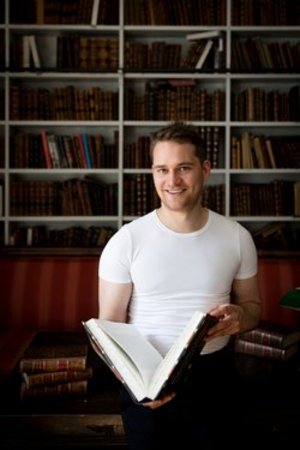
Assyriology
Sophus Helle has found new ways to study the history of the concept of authorship. In ancient Babylonian and Assyrian cultures, the concept of a personified author arose.
The world’s first known author was the Sumerian princess Enheduana. She lived around 2300 BC in ancient Iraq. However, the oldest preserved clay tablets with Enheduana’s dramatic hymns to the capricious goddess Inana are from 4-500 years after the author’s death.
Philologist have therefore been wanting to find out whether the texts are actually Enheduana’s own or whether they have just been ascribed to her. Because unlike characters such as Homer from ancient Greek literature, Enheduana is without a doubt a historical person. Those are the words of Sophus Helle, who provides an alternative approach in his thesis.
“I have reconsidered the very way of studying the history of the concept of authorship. When studying pre-modern cultures, you often come across methodological problems if you become too focused on the real human being behind the literary works. Ancient literature was created in a more collaborative and gradual manner,” says Sophus Helle.
A new explanatory framework
Using his own methodology, he focuses on the stories or myths told about an author in Babylonian and Assyrian cultures. So far, research has tended to disregard such stories about authors as historically unreliable.
“Instead, I look at them and see what they tell about people’s way of viewing literature. I am not the first to introduce such a methodological approach, but I refine some of the methods which can then be applied for research,” Sophus Helle adds.
In his subsequent historical studies of the stories about the authors, he shows how these are often related to a reinterpretation of older and unfamiliar texts.
“For example, the original culture or context, in which the work was written, may have been lost. In that case, the stories can be used to explain where the work comes from and how it can make sense.”
Building bridges between disciplines
With his degree in Assyriology from University of Copenhagen, Sophus Helle was a stranger when he became a PhD student at comparative literary studies in Aarhus. In his studies, he has used his interdisciplinary position to build bridges. A comprehensive list of publications testify that he is well on his way towards his goal of establishing conversation between comparative literature and Assyriology.
“As a subject, Assyriology has been rather unapproachable. So, much of what I do is about providing interesting information about Assyriology, both to an academic and a wider audience,” Sophus Helle explains.
Most recently, he has also translated Enheduana’s main work Queen of all powers from cuneiform into both Danish and English, and along with his PhD studies he published, in collaboration with his father, the poet Morten Søndergaard, a critically acclaimed Danish translation of the best known epic from the Babylonian world, Gilgamesh.
Sophus Helle now continues his studies in an international postdoc project where he will be investigating interdisciplinary connections between philology, comparative literature and translation theory.
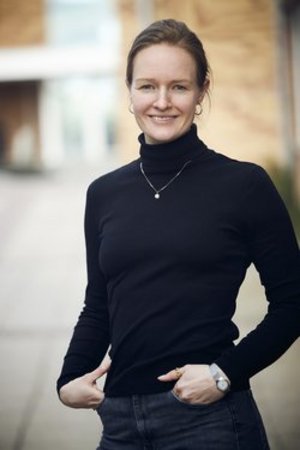
Applied Microeconometrics
Can data from national health registers be used to identify inadequately discussed causes and consequences of teenagers’ risky health behaviours? Yes, if, as Economist Eva Rye Johansen, you specialise in applied microeconometrics, that is, finding statistical methods for processing data about the behaviour of individuals.
“I have used statistics of Danish women born between November 1981 and February 1992. In addition to information about school start, I have looked at data for alcohol poisonings, abortions, births and treatment for chlamydia. The data show that the age of the girls when they start school has an influence on their risky health behaviour when they reach their teens,” Eva Rye Johansen summarises.
In her PhD project, she has compared large groups of girls of nearly the same age, who were born shortly before and shortly after the turn of a year, and who have therefore started at different grades. Her studies show that girls who start school early, also start drinking and having sex at a relatively younger age. However, Eva Rye Johansen’s analyses also reveal that the group of girls starting school early have a slightly higher risk of having an induced abortion when they are 15-20 years old, in fact 36% higher than the average. And they also have an increased risk of getting alcohol poisoning, which happens 58% more frequently than the average.
Research and politics
This is not the time or place to describe immediate results and methodical design. However, Eva Rye Johansen’s results are a good example of how the rather unique Danish register data can be used in a way that resonates with the research community – her sole authored article has been published in the leading international Journal of Health Economics.
At the same time, her findings show how microeconometrics can contribute valuable knowledge in the preparation of efforts or policies in relation to social issues.
“For example, you may have a political objective that 15-year-olds should drink less or that fewer 18-year-olds should become pregnant. However, perhaps focus should instead be on the grade they are in,” Eva Rye Johansen suggests.
Focus on family economy
The two other chapters in her PhD thesis have been co-authored with two other researchers, and they look into the consequences of teenage pregnancies.
“First we show that becoming a teen parent has negative consequences for both the mother and the father. It may also be useful if a policy in the area would not only support the young mothers but also the fathers.
The last chapter focuses on the consequences for the children. It seems that the young age of the parents is not the only reason why the children do not do well but that a number of other factors are also involved,” says Eva Rye Johansen.
She now continues her research as an assistant professor at Aarhus University where she uses microeconometrics to study causes of social inequality.
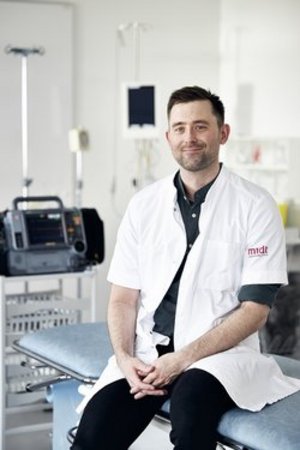
Cardiac Arrest
With his PhD project, Mathias Johan Holmberg has contributed with new insight into the prevalence and treatment of cardiac arrest.
Mathias Holmberg became interested in cardiac arrest in hospitalised patients when, as a medical student, he spent his research year at a hospital linked to Harvard Medical School in Boston. During his research year, he realised that very little knowledge existed about the acute and unexpected condition cardiac arrest, which is a difficult research area due to the high mortality rate.
“No strong evidence exists for many of the treatments we offer at hospitals. However, after graduating as doctor I returned to the hospital in Boston to take a PhD as part of a Danish-American collaboration,” explains Mathias Holmberg.
He started by studying the prevalence of cardiac arrest in hospitals. In the USA, such data are not available in national registers. However, by using sophisticated statical methods, he successfully estimated the number of patients suffering cardiac arrest in American hospitals to be just less than 300,000 patients per year. This number is significantly higher than previously assumed, and his findings are therefore frequently quoted by others.
Means for resuscitation
Mathias Holmberg then went on to study some of the drugs used for resuscitation attempts. 2010 saw atropine removed from the international guidelines for treatment of cardiac arrest. However, no thorough studies have been conducted as to whether its exclusion was warranted.
“We applied some statistical methods that were much more complex than those that had previously been applied. Our study shows that the use of atropine is not linked to higher survival rates, which supports the current recommendations. In the third study, we collected a vast amount of knowledge about the well-known use of adrenaline. The use of adrenaline has been surrounded by some controversy because it was believed that, although it might be efficient for resuscitation, it also seemed to lead to higher rates of brain damage,” explains Mathias Holmberg.
However, based on his meta-analysis, he is convinced that he can eliminate this concern. The study was commissioned by the international organisation that makes the guidelines in the area. And Mathias Holmberg co-authored the guidelines for both 2019 and 2020.
Prevention and reduction
In his thesis, Mathias Holmberg also presents a study where 48 patients suffering from cardiac arrest were given ubiquinol, which in a previous scientific study had been shown to improve survival rates and reduce the brain damage caused during cardiac arrest.
“The drug can only be administered orally in the form of a liquid. However, in our initial study, it did not seem to be absorbed by the body via that route. The primary purpose of the study was therefore to study it further, and we succeeded in showing that ubiquinol actually can be absorbed via the gastrointestinal tract,” says Mathias Holmberg.
Unfortunately, it did not appear to have the same positive effect as described in the old study.
After completing his PhD, Mathias Holmberg has divided his work between clinical work and research, and he is planning to keep it that way.
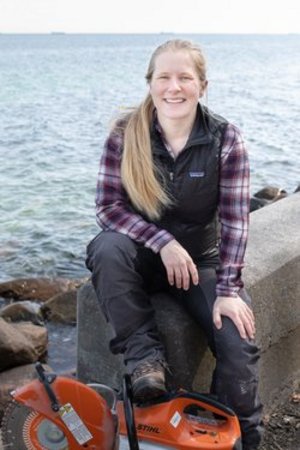
Dating Methods
Astrid Strunk has reconstructed how the Ice Sheet in Northern Greenland reacts to climate change. She has also improved some of the methods for carbon dating.
When geologist Astrid Strunk started on her PhD project, her main objective was to reconstruct the movements of the Greenland Ice Sheet in parts of Northern Greenland. There were still some blank spots on the geological world map. And being a practical-oriented explorer, she went on polar expeditions, collected bedrock and lake bed samples only to stumble upon a problem.
“When you estimate the age of sediments on a lake bed, you normally date them using macrofossils, particularly plant residue visible to the naked eye. Only, there are no plants in Northern Greenland, making it harder to date sediments. So, I started looking for microfossils, plant residue the size of sand grains or smaller,” explains Astrid Strunk.
In that way, her project evolved into also dealing with method improvement. By including knowledge from other fields, she discovered that she was actually able to refine the methods quite substantially when it came to carbon dating the so-called bulk samples, or to put it in layman terms: a spoonful of mud from the lake bed.
Eliminating the sources of error
“When you lack macrofossils to date, you will typically date the content of the entire bulk sample. However, this produces a very inaccurate result since the carbon dating represented by the sample is a mix of all its particles,” explains Astrid Strunk, and continues:
“So, I started looking at where the carbon in my samples came from. Did it come from 10,000 year-old plants which were the desired goal of my dating efforts? Or was it 100,000 year-old humus that would make my sample seem older than when the sediment was actually deposited?”
In her thesis, she presents a set of methods that to a large extent makes it possible to eliminate the sources of error. To reach that far, she had to apply geophysics, biology and computer modelling. In future, new methods may become widely used.
“The issue of having no ideal fossils to date, i.e. macrofossils, is not just something you encounter when you research the North Greenland Ice Cap. You might as well encounter it as a biologist in Venezuela or as an archaeologist in Africa. They will also be able to use these methods”, says Astrid Strunk.
The ice is melting rapidly
By applying these and other methods, she successfully mapped past ice movements in a part of Northern Greenland. By looking at how much and how fast the ice melted after the last Ice Age, you can estimate how the ice will melt during the current global warming. And regrettably Astrid Strunk has some bad news for those hoping for a modest rise in sea levels.
“The computer models that have previously been used for Northern Greenland turned out to underestimate the melting. I found that the ice was actually larger than previously assumed and had melted much faster than anticipated,” she explains.
Astrid Strunk currently works in a postdoc position at the Danish National Museum, where she reconstructs the Southern Greenland climate during the Viking Age.
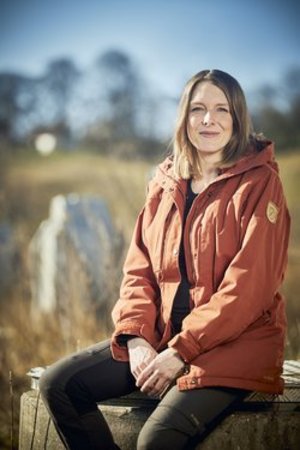
Nutrient Reduction
Mette Vodder Carstensen researched how to use drainage systems as a buffer between fields and streams to avoid nutrients from the fields ending up in nature.
Danish agriculture is undergoing a transition to ensure less leaching of nitrogen and phosphorous from fields into streams. However, it can be difficult to find suitable solutions among the means currently available. In her PhD project, biologist Mette Vodder Christensen has studied how to expand the range of drainage systems and increase their multifunctionality.
“Many of Denmark’s natural wetlands that serve as the kidneys of the landscape have been eliminated. They have a natural ability to remove nutrients. At the same time, around half of Danish agricultural land has subsurface drainage pipes that serve as a motorway for the nutrients into the streams. However, using drainage systems as ponds, you can replicate the filter function of natural wetlands,” explains Mette Vodder Carstensen.
So far, Denmark has only approved two types of drainage systems, however, new systems are being tested to give the farmers better opportunities to select solutions that match the specific landscape. This is where Mette Vodder Carstensen has contributed with research studies of a new type of system called intelligent buffer zones.
Versatile methods
Part of the secret behind the drainage systems is the natural presence of denitrifying bacteria that convert nitric nitrogen in the water into nitrogen gas. However, the drainage systems also pose some challenges:
“Under deoxidised conditions, the denitrifying bacteria in the drainage systems are able to breathe using nitrogen, which is thus removed from the water. However, when the nitrogen is gone, the bacteria start using other substances to breathe, which will ultimately lead to the formation of methane. In addition, inadequate denitrification can lead to the production of nitrous oxide,” explains Mette Vodder Carstensen.
A large part of her project involved describing these challenges through work that covered comprehensive literature studies of new statistical methods and more detailed measurements of greenhouse-gas emissions in the field and programming in front of the screen.
Negative side effects
A key objective is naturally to design the drainage systems to reduce the emission of greenhouse gases as much as possible, while achieving satisfactory nitrogen removal at the same time.
“This can for instance be done by avoiding too long retention times during summer so as to avoid creating conditions in which methane-forming bacteria thrive,” says Mette Vodder Carstensen.
When selecting and designing drainage systems in the future, you will need to consider a multitude of aspects, and this is where Mette Vodder Carstensen’s results can be used. And that is also why she has focused on phosphorous, biomass and biodiversity. She did her PhD as part of the Nordic Center of Excellence Biowater financed by Nordforsk, where she is still doing research as a postdoc with focus on the green transition to bioeconomy in the Nordic region.